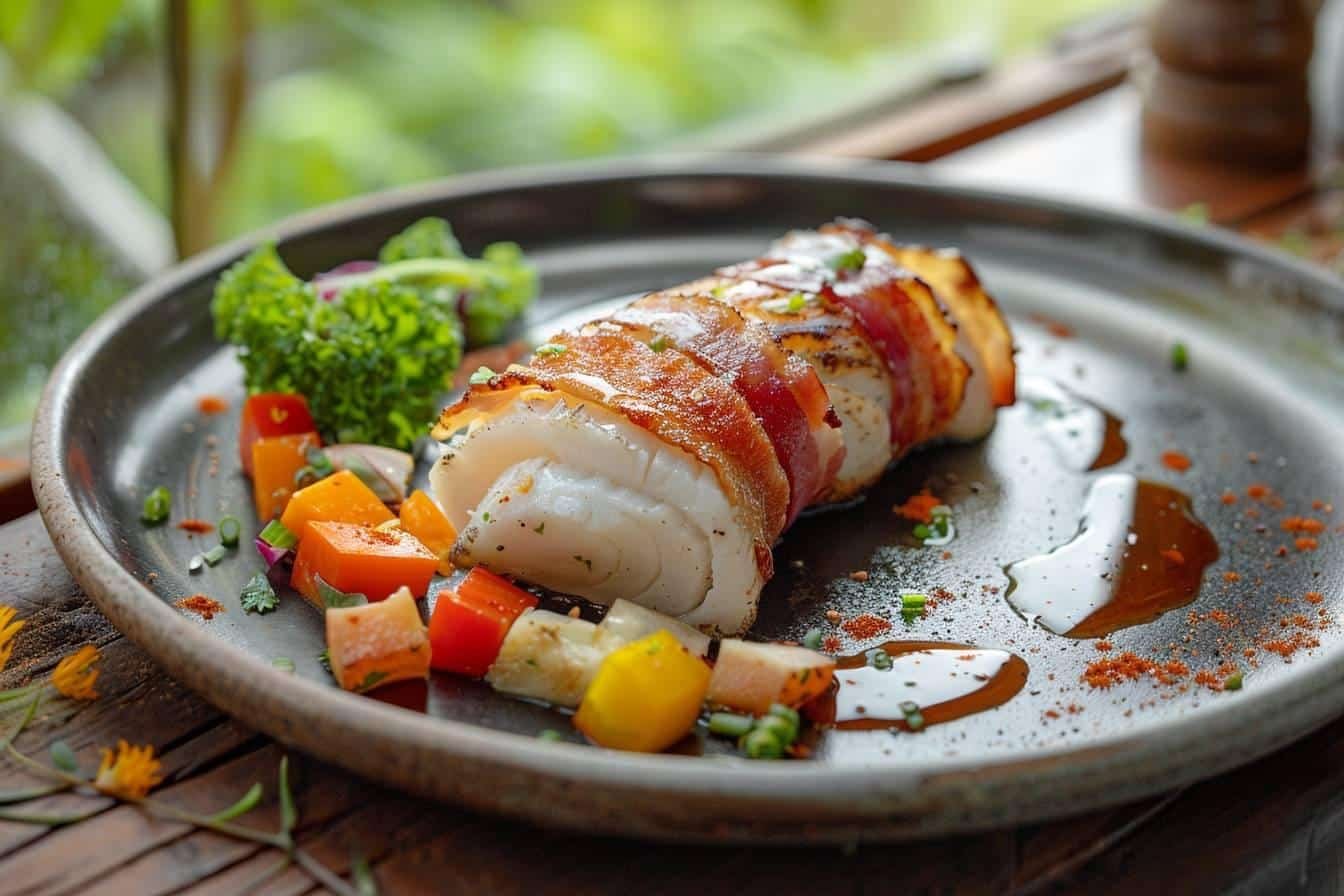The article in brief
The monkfish, a fascinating fish with many facets, deserves a closer look. Here are the key points to remember:
- Unique appearance flat head, large mouth, body up to 2 metres long
- Specific habitat seabed depths of between 50 and 1,000 metres
- Ingenious hunting technique using a natural lure
- Culinary delights White, firm flesh, almost edgeless
- Important ecological role in the marine ecosystem
Ah, the monkfish! This captivating fish has always been one of my favourites. With its unique silhouette and delicious flesh, it's definitely worth a look. Let me show you all the secrets of this ocean delicacy.
An extraordinary fish
La monkfishalso known as anglerfish, is a very special fish. Its flat head and wide mouth give it an almost prehistoric look. I've always been impressed by its ability to blend into its environment.
Portrait of a seabed predator
This fish from the Lophiidae family has an atypical appearance, to say the least:
- An oversized, flattened head
- A huge mouth lined with sharp teeth
- An elongated body of up to 2 metres
- Impressive weight, up to 45 kg
Believe me, the first time I saw a whole monkfish, I was really surprised! It's a real sea monster, but so interesting.
A very specific habitat
La monkfish is an inhabitant of the deep. It is mainly found in :
- North-East Atlantic
- In the Mediterranean
- In La Manche
- In the North Sea
It is particularly fond of sandy or muddy bottoms, at depths of between 50 and 1,000 metres. It is a true master of camouflage in these environments.
A unique hunting technique
What has always fascinated me about burbot is their ingenious method of hunting. They use a natural lure on their head to attract their prey. Once in range, it gobbles them up in one fell swoop! Its menu consists mainly of fish, crustaceans and cephalopods.
A culinary delight to discover
Beyond its unflattering appearance, monkfish is a real gastronomic treasure. Its firm, white, almost boneless flesh makes it a delicacy of choice for fish lovers.
Edible parts
On the subject of tasting monkfish, there are several parts to enjoy:
| Part | Features |
|---|---|
| Tail | The most eaten part, tender and boneless |
| Cheeks | Delicate pieces, much appreciated by connoisseurs |
| Liver | A speciality for the more adventurous |
Personally, I'm partial to the cheeks. It's a real treat!
Preparation and cooking
To prepare monkfish, it is essential to remove the skin and the white membrane covering the flesh. There are then a number of ways to cook it:
1. In the oven
2. Pan-fried
3. On the barbecue
4. On skewers
5. Simmered
One of my favourite recipes is monkfish with bacon. This combination of land and sea is simply divine. And if you like original combinations, I recommend find out how to enjoy emerald oystersanother marine treasure with unique flavours.

A fish with an interesting biology
As a marine animal enthusiast, I can't talk about the monkfish without mentioning its particular biology. It's a fish that never ceases to amaze me!
Reproduction and growth
The monkfish breeding season runs from February to July. The female can lay up to 1 million eggs! Impressive, isn't it? However, this fish grows rather slowly. It takes 6 to 7 years for a burbot to reach sexual maturity.
An important ecological role
Burbot play a crucial role in the marine ecosystem. As a predator, it helps to regulate the populations of other species. It is an essential link in the seabed food chain.
Unfortunately, like many marine species, the monkfish faces threats:
- Overfishing
- Marine pollution
It is our responsibility to preserve this interesting species. I am convinced that we can reconcile sustainable fishing with the protection of marine biodiversity.
A seafood product to be promoted
La monkfish is a product that deserves to be better known and appreciated. It is caught mainly by bottom trawl from September to June. The commercial weight of this fish is around 500g once gutted, or 200g with the head on.
I've noticed that the price of monkfish tends to rise during the festive season. It's a product that's gaining in popularity, following the global trend of increasing fish consumption. Did you know that, on average, each person consumes around 20.5 kg of fish a year?
Ultimately, monkfish is much more than just a fish. It's a culinary treasure, a biological marvel and a key player in our marine ecosystems. As a lover of animals and gastronomy, I can only encourage you to discover this delicacy of the oceans. And who knows, maybe you'll become as passionate about this captivating fish as I am!
